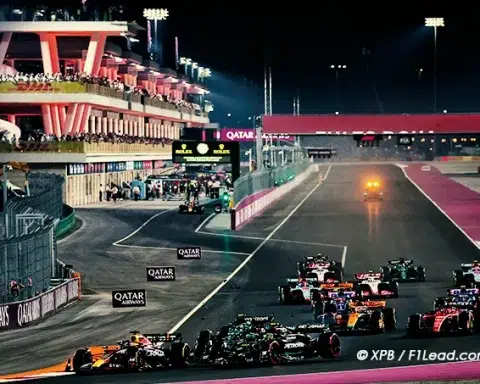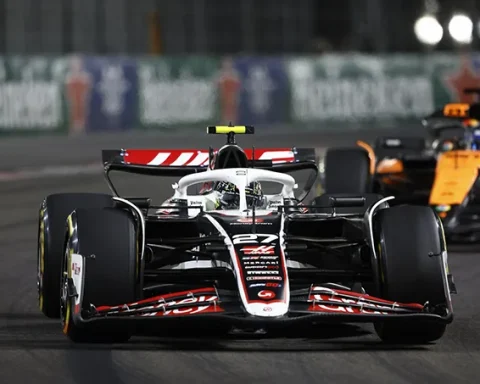James Allison, Technical Director at Mercedes F1, analyzes the team’s Australian GP showing, focusing on the W15’s heat-related issues.
James Allison, Mercedes F1’s Technical Director, reflected on his team’s performance at the Australian Grand Prix. The British engineer revealed that the Brackley squad is starting to grasp the issues plaguing their W15, suggesting temperatures might play a role.
“Virtually no setup changes were made between FP3 and qualifying.”
“Of course, we reduce the fuel, crank the engine up to 100%, all those things. But there was no significant difference in settings because we felt we had placed the car in a decent window during FP3, and this was reflected in the time sheets.”
“We are beginning to see a pattern emerge: most weekends, we have a period where we feel good with the car, confident, but then, during the pay sessions, qualifying, and the race, it slips away from us,” stated Allison.
“If we were to try to pinpoint this pattern, the strongest correlation we can currently make is that our competitiveness drops when the track is hot, during the warmest part of the day, and as tire temperatures rise alongside track temperatures.”
“The times when we’ve been at our best were all in the cooler sessions, and this gives us some clues on what we need to do to make progress from here. However, between FP3 and qualifying in Melbourne, there were no changes to the settings.”
“Allison emphasizes that the correlation issues Mercedes faces are not unique to the team, noting that it’s a daily challenge for all outfits in Formula 1, despite increasingly sophisticated tools.
“There are always correlation issues every year in every team, and there will always be correlation issues between what you see at the factory and what you see on the track because the factory is a kind of reduced version of reality.”
“It’s not the same as driving a car on a real track, on the asphalt of an actual circuit, with all its infinite details and complexity. You have simplified models here, at the factory, and these simplified models are powerful for steering you in one direction or another.”
“But they all have shortcomings and correlation issues. To a large extent, the models we have, the simulation tools we possess, are incredibly effective at keeping us on the right path and guiding us towards more lap time. The devil is always in the details.”
“In terms of the balance between high and low speeds, we could improve this part of the models because there’s a difference between what we see on the track and what we see in the virtual world.”
“These differences, if we can bridge them, allow us to be more accurate in the projections we make here to solve the problems we believe are holding the car back.”
Solutions that depend on certain characteristics
Mercedes is starting to understand in which windows it needs to conduct its tests to evolve its car and look for solutions based on specific characteristics: “It’s better defined in terms of the necessary time.”
“If you know what you’re aiming for, if you’ve correctly identified the reasons why our competitiveness fluctuates, you can then set up a program to try to evolve the temperature and thermal balance between the front and rear in your favor, using all the conventional car tuning tools. This work can be done here, at the factory, through simulations, etc.”
“But if you conclude, after exhausting the degrees of freedom you have in terms of settings, that you still need to go further, then it becomes more challenging at that point because there are underlying characteristics, for example, in the aerodynamic mapping you’ve designed or in the suspension characteristic that exacerbates that particular feature.”
“And for it to really recover well, you need to change these underlying characteristics. It could be quick and dirty work or a bit more involved and a bit more complicated.”
Mercedes W15: Heat Affects Performance at GP. Mercedes W15: Heat Affects Performance at GP
- ReadMore>Williams Confident for Suzuka with 2nd Car Ready
- Following us on Facebook and Twitter










